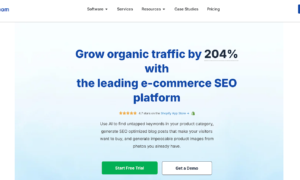Expanding into new markets is an exciting prospect for e-commerce businesses. However, successfully connecting with international audiences requires more than just translating your website content word-for-word. To drive meaningful customer engagement, you need high-quality translations tailored to the nuances of each target culture. Mastering the art of E-commerce website translation takes some finesse, but doing it right can unlock major growth opportunities.
Conduct thorough market research
The first step is choosing languages strategically based on market and audience research. You want to focus your translation efforts on locales that show solid e-commerce potential for your products or services. Analyze factors like regional market size, growth trends, competitor presence, logistical connectivity, and local purchasing power. Also research cultural nuances, consumer behavior patterns, and localization preferences that could impact engagement across each market. This information will help you prioritize high-ROI translation needs.
Assess industry experience and security
Not all translation vendors are created equal when it comes to e-commerce content. Once you’ve mapped high-priority languages, start evaluating providers that specialize in translating for global online businesses and retail websites. Look for demonstrated industry experience translating similar sites and products. Make sure they maintain robust information security precautions as well. Also ask about translation management platforms and workflow automation capabilities that add efficiency. The right partner makes all the difference, so choose carefully.
Focus first on pages that influence conversions
Trying to translate your entire site all at once is unrealistic for most e-commerce businesses. Start by identifying high-value pages that play an important role in engaging and converting international customers. Product and category pages are a typical starting point. Homepage content also deserves prominent early translation attention to make that vital first impression. Cart, checkout, shipping, payment, account, and help center pages carry significant conversion weight as well. Translate these priority pages first, then map expansion to broader site content in future phases.
Reorganize content architecture for optimal experience
In addition to language translation, take time to adapt the underlying architecture of your content for each market. Structural elements like navigation menus, product comparisons, special guides and category landing pages should be tailored to match regional user expectations and purchasing journeys. Make sure translated content flows in an intuitive localized manner. Promote region-specific payment methods, shipping options, custom duties, customer support channels and returns policies in logical locations that customers can easily self-serve. Refine informational hierarchy and style considerations like date formats and currency markings accordingly as well.
Weave in culturally-relevant touches across translations
Verbatim word-for-word translations often fail to resonate meaningfully across cultures. The most effective e-commerce translations artfully weave in culturally-appropriate examples, idioms and touches to make content more conversational, relatable and compelling. Seek help from native translators who understand the nuances of each dialect and can incorporate contextually-relevant regional color. Adapt imagery and messaging to align with local trends as well. These types of customized localization refinements can strengthen emotional connections with overseas customers.
Detailed yet concise descriptions build customer confidence
For e-commerce sites, well-crafted product descriptions are vital for converting internation customers. Quality translations capture the essence of key product benefits and functionality while also weaving in critical details that instill customer confidence. Convey differentiating factors versus competitors along with exact specifications related to materials, sizes, capacity, configurations, power, integrations and more. Include guarantees, warranties and compliance credentials. Stay detailed yet tight and scannable. Structure consistent sub-sections across products as well for easy cross-reference. Photos, videos and imagery should visually reinforce what textual descriptions promise as well.
Boost international findability with SEO refinements
To drive qualified website traffic from local search queries overseas, translated pages should be optimized for region-specific SEO needs too. This includes adjustments like interlinking core pages around priority keyword phrases in each language and dialect. Provide locale-focused sitemaps. Sprinkle strategic keywords across page titles, headers, URLs, meta descriptions and image ALT tags as well. Boost local rankings by earning native language reviews and backlinks from relevant media publications in each area. Such enhancements make you more discoverable via channels popular across your expansion markets.
Planning for Multi-Currency Support
Pricing and promotions should align with local market norms. Support international currency types, symbols and decimal separations to eliminate customer confusion and hesitancy. Consider regional payment method preferences and risk reduction requirements as well. Some areas may be more cash-based for instance. Research common numerals and currency values associated with attractive price points regionally too. Many countries have superstitions around certain numbers for example. Tailor coupons, loyalty programs and automatic volume discounts accordingly per locale.
Offering Preferred Payment Methods
Just as pricing localization matters, so too do payment methods attuned to regional consumer preferences. Offer the most commonly used online payment options across your expansion markets. This often means supporting a combination of major credit cards, PayPal, and dominant local providers like AliPay in China or Klarna across Europe. Ensure translations explain each option clearly alongside currency and language consistencies. Also build in capabilities around preferred local invoice and installment payment cycles which vary internationally. Reducing payment friction is key for higher conversions.
Staying on Top of Translation Maintenance
Exceling at e-commerce translation requires understanding that global digital content needs consistent care and feeding across markets much like your domestic site. Continually add new products, categories, promotions and site features into translation workflows to keep international pages completely fresh and consistent with the core site. Review analytic metrics like engagement times and bounce rates by market to identify fragile points needing refinement. Survey international customers regularly regarding localization gaps as well. Build such maintenance diligence into ongoing translation budgeting cycles.
Conclusion
Mastering end-to-end e-commerce website translation is an involved yet rewarding process that opens up major international revenue growth opportunities when done right. Prioritizing high-ROI languages, choosing specialized translation partners, leading with high-value pages and perfecting localization refinements across content, visuals, products, payments, support and more can elevate global customer engagement significantly over verbatim translations alone. Treat localization as an ongoing optimization practice integrated across teams. With meticulous globalization execution, your translated online presence can thrive overseas for the long run.
## FAQs
**What are some common mistakes companies make with e-commerce translation?**
Rushing too fast, using amateur translators unfamiliar with e-commerce nuances, failing to adapt underlying site architecture, and neglecting cultural context considerations are some top mistakes.
**Should every page be translated at first launch overseas?**
No, it’s best to start with high-value pages first. Then map expansion in phases based on engagement analytics, resources and business priorities across markets.
**Why does literal word-for-word translation often struggle to engage foreign customers?**
Different dialects convey contextual meaning and emotion uniquely. Effective localization requires understanding cultural nuances layered into language.
**What role should visual content play in translated sites?**
Imagery, video and visuals should align with regional preferences as well, featuring relatable scenarios and faces that international customers identify with.
**How can companies determine which markets deserve priority translation investments?**
Thorough market research of factors like size, growth, logistics connectivity and local competition should guide smart translation prioritization.
ur Brand Globally: Mastering the Art of E-commerce Website Translation




































